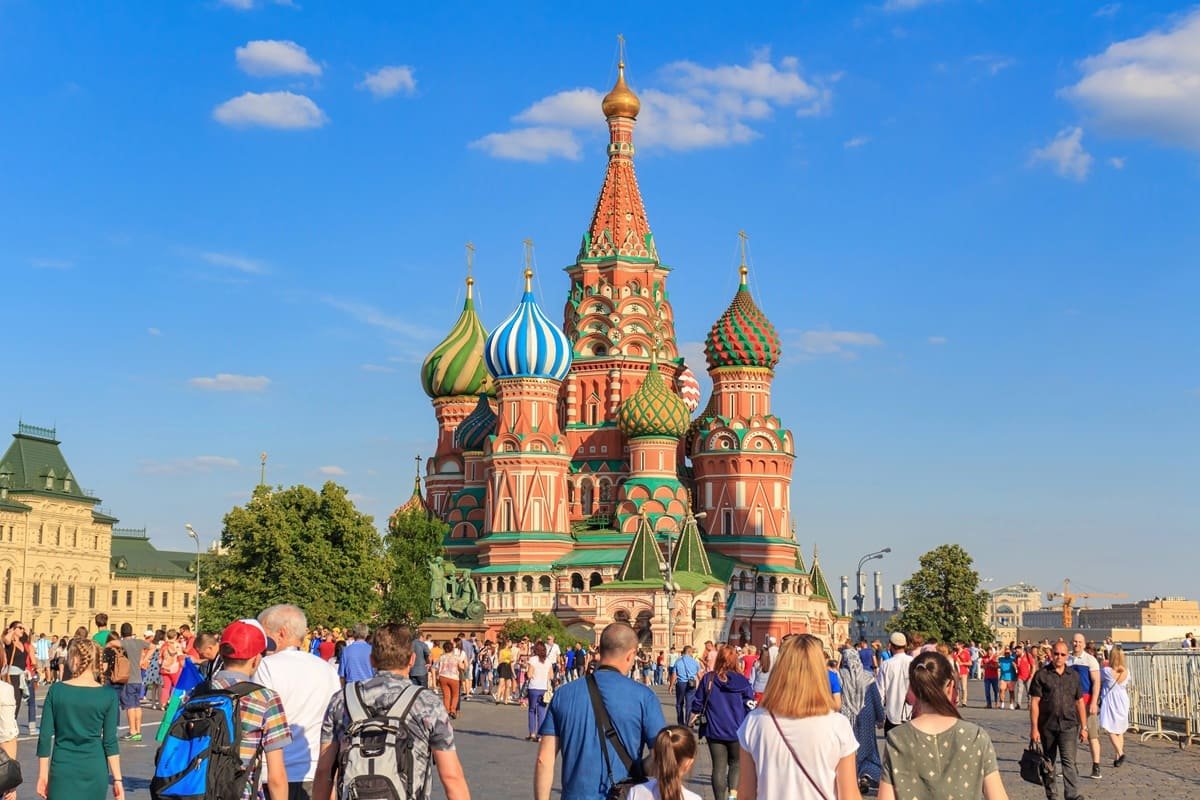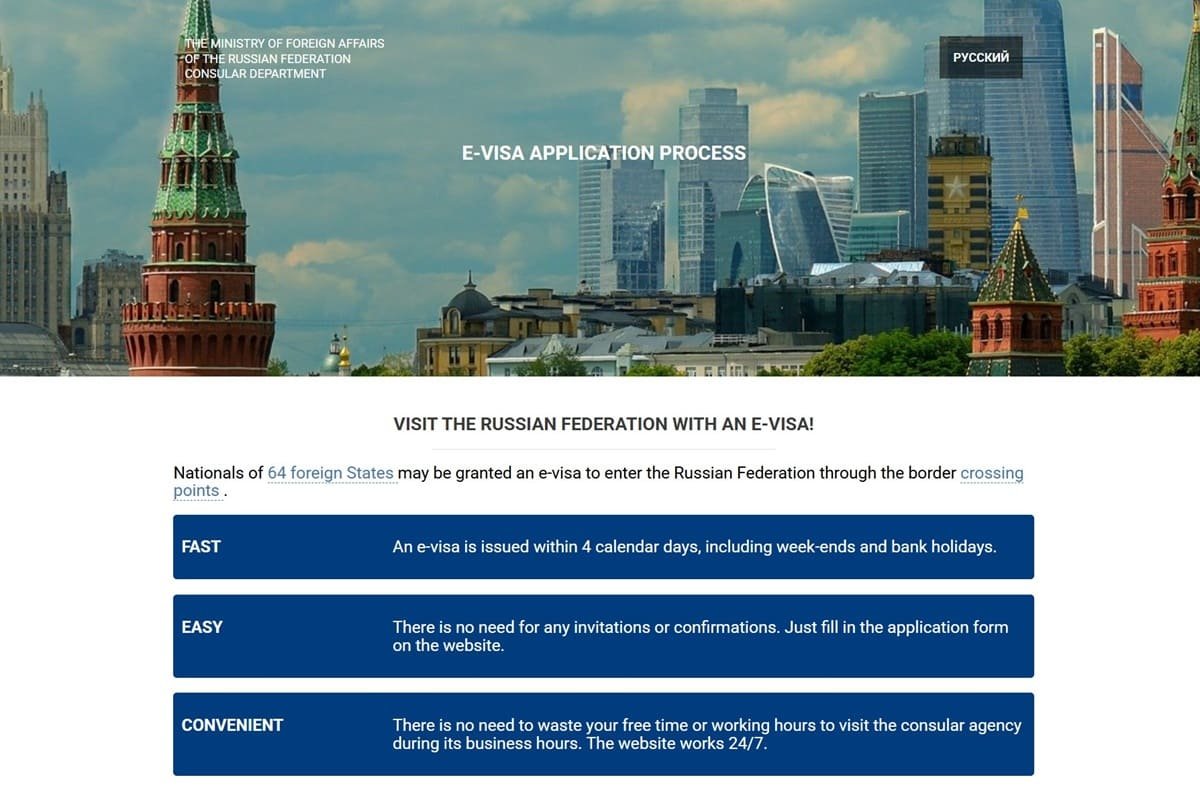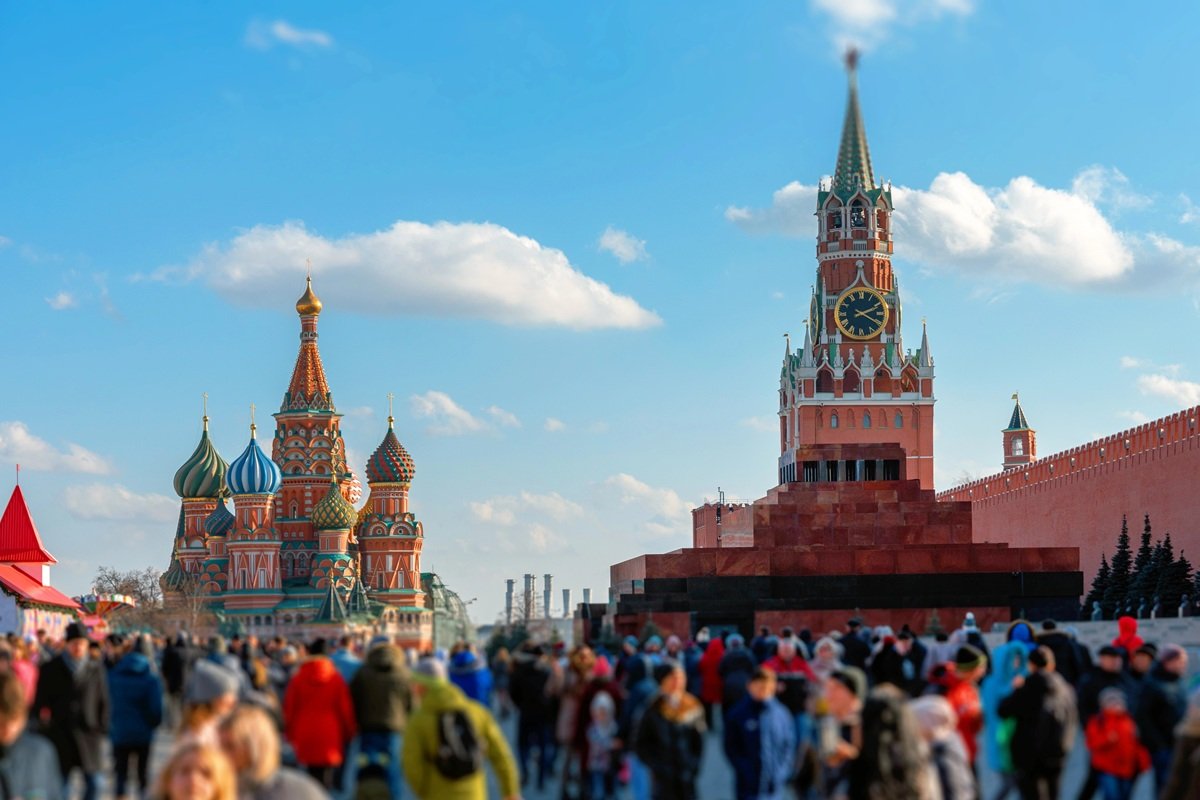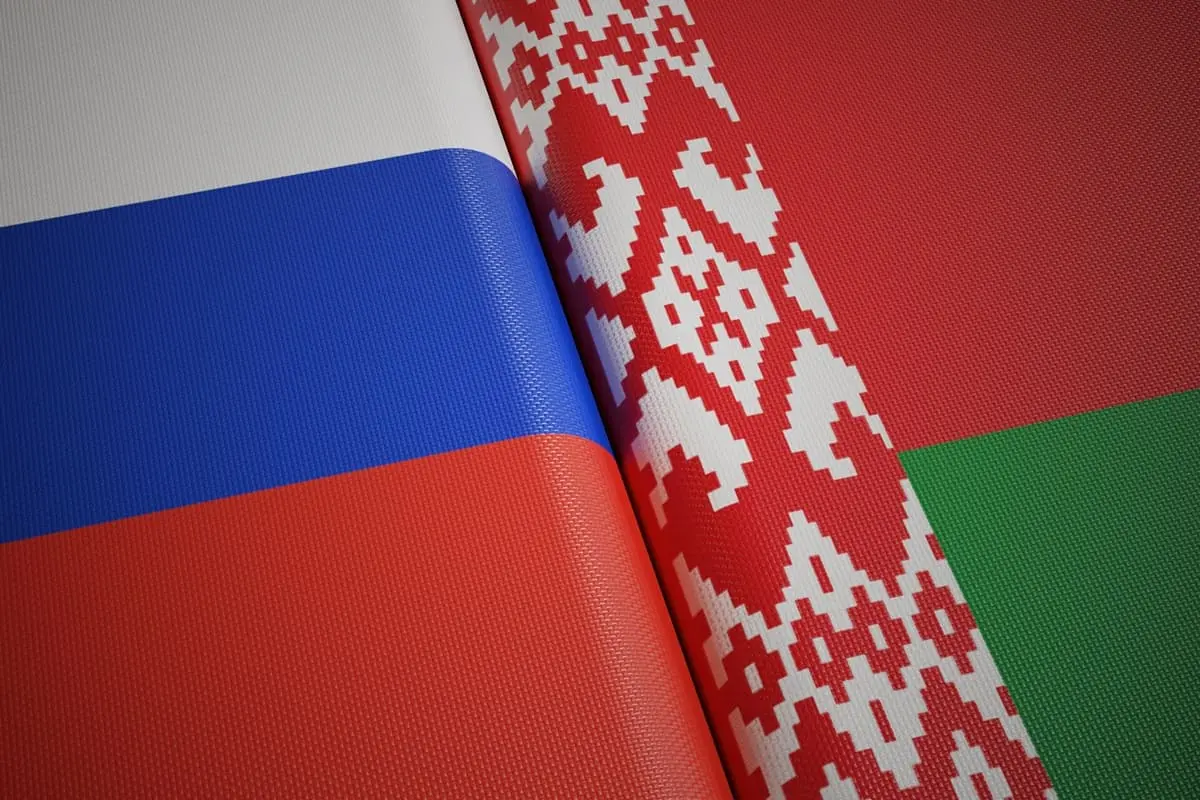Starting August 23, 2025, the validity of the electronic visa (e-Visa) for Russia will increase from 60 to 120 days, while the maximum length of stay will increase from 16 to 30 days.
Launched on a large scale in August 2023, the electronic visa (e-Visa) has already facilitated the entry of more than 1.2 million visitors to Russia, according to the authorities. Travelers from China, Saudi Arabia, Germany, Turkey, India, and Estonia are the most frequent users of the e-Visa, the Russian Foreign Ministry recently announced.
Available to more than 60 nationalities, the e-Visa has so far allowed stays of 16 days in the Russian Federation, valid for 60 days from the date of issue. However, as of August 23, 2025, these limits will be significantly increased: the authorized stay will be extended to 30 days, while the validity of the e-Visa will be doubled to 120 days.
This change, confirmed by a presidential decree signed on July 23 by Vladimir Putin, is part of a targeted reopening of the country in an international context still marked by tensions but also by a desire to boost the country’s appeal.
The Russian Ministry of Foreign Affairs explains that “extending the validity of the electronic visa from 60 to 120 days, as well as the authorized length of stay for foreign nationals in the Russian Federation from 16 to 30 days, while maintaining the multiplicity of this visa, will help increase the number of foreign nationals entering our country for tourism, business, humanitarian and tourist purposes, while maintaining the appropriate level of migration control and national security requirements of the Russian Federation.“
”This rule will come into force on August 23,” adds the Russian Foreign Ministry.
Electronic visa in Russia: a long-awaited reform
The extension of the validity period of the Russian electronic visa is not a sudden surprise. It had been mentioned several times over the past few months, notably in statements by Russian officials suggesting that a relaxation of the system was being considered.
The idea of extending the stay beyond the 16 days initially authorized had already been discussed at the end of 2023, at a time when Russia was seeking to boost its appeal to tourists. Subsequently, the extension of the e-Visa to 64 nationalities had reinforced expectations of a broader reform, suggesting that the authorities were also considering revising the conditions of validity.
Finally, more precise information circulated last spring, indicating that Moscow was preparing to change the legislative framework, with a formal extension of the authorized stay and the visa validity period, thus confirming a trend that had already been underway for several months.
Russia: towards a multiple-entry e-Visa?
Although the Russian e-Visa remains limited to a single entry, several recent signals point to a possible relaxation in the medium term.
Russian government officials have recently raised the possibility of introducing a multiple-entry e-Visa to better meet travelers’ expectations.
“Currently, 64 countries are on the list of countries eligible for an electronic visa. In the near future, we plan to extend the length of stay with an electronic visa from 16 to 30 days. There is also a demand to allow multiple use of the e-Visa. This is the next step we will work on with the Ministry of Foreign Affairs and the border services before presenting a proposal,” said Maxim Reshetnikov, Minister of Economic Development, on June 11, 2025.
Border controls maintained despite e-Visa relaxation
Alongside the extension of the e-visa’s validity, the presidential decree published on July 23 specifies an important provision concerning entry into Russian territory. It states that “federal law provides for the possibility of crossing the national border outside the established routes and places with the permission of the border authority of the Federal Security Service. In other cases, crossing the national border outside the established routes and places is prohibited.”
This provision confirms that, by default, foreigners may only cross the Russian border via one of the 105 officially designated checkpoints, such as international airports (Moscow, Saint Petersburg, etc.), railway stations, seaports or land border crossing points.
However, the law introduces an exception: an “off-route” crossing (i.e. outside these standard checkpoints) may be authorized, but only with the explicit consent of the Federal Security Service (FSB), via its border agency.
For the average traveler, even with a valid e-Visa, this does not automatically grant the right to enter via any route or geographical point. This also highlights that, despite the relaxation of the visa regime, territorial control remains strict, particularly in a tense geopolitical context.
The e-Visa for Russia in practice
The unified electronic visa, better known as the e-Visa, is a system set up by the Russian authorities to simplify access to the country. Intended for travelers from 64 countries, including France, Italy, Germany, Spain, China, and India, it facilitates entry into Russia for tourism, business, humanitarian, or cultural purposes.
The procedure is entirely paperless: everything is done online via the official portal evisa.kdmid.ru. Applicants must fill out an electronic form, provide a digital ID photo, a copy of their passport, and details of their stay.
The e-Visa costs approximately $50, payable online. For children under the age of six, the visa is issued free of charge, excluding bank charges. Once the application has been submitted, the processing time is generally four calendar days.
Currently, the e-Visa is valid for 60 days from the date of issue, for a single stay of 16 days on Russian territory. However, as of August 23, 2025, this validity will be extended to 120 days, and the maximum length of stay will be increased to 30 consecutive days. However, the visa will remain a single-entry visa for the time being, which means that once you leave the country, you will have to apply for a new visa to return.







